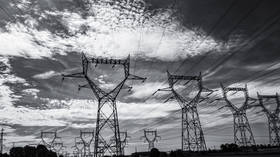Energy storage could emerge as the hottest market of 2022

A few years ago, battery energy storage began drawing attention as what one industry executive at the time called the Holy Grail of renewable energy. In the years since, EVs have stolen the spotlight but now battery storage is back, larger than life and, quite likely, twice as expensive.
The ongoing energy crunch in Europe is one good illustration of why, if we are going down the renewable energy path, we need to build battery storage – and a lot of it. One cause of the crunch, admitted unwillingly but still admitted, was lower than usual wind power output. With storage, at least some of that output might have been stored for later use.
The Financial Times reported this month that the battery storage industry is getting billions poured into gigafactories, where battery cells for electric vehicles (EVs) and storage installations are made. According to the report, energy storage companies raised $5.5 billion in venture capital funds over the first nine months of 2021 across 59 deals. This compared with just $1.2 billion across 91 deals during the same period of 2020.
“Batteries will play an increasingly important role in allowing high levels of penetration of variable renewable energy like wind and solar on the grid,” the FT quoted Oxford Institute for Energy Studies research fellow Barbara Finamore as saying.
“The [investment] numbers are changing so fast, people cannot keep up with how many gigafactories are in the pipeline.”
The above smacks of a future bubble, but given the net-zero targets of the Paris Agreement, investors are excused for buying into this particular bubble. Among these targets, per the International Energy Agency, is selling only electric cars from 2035 onwards and having two-thirds of the global energy supply come from wind, solar, biomass, hydropower, and geothermal. This is one massive undertaking that cannot happen without equally massive storage.
In October last year, energy consultancy Wood Mackenzie forecast that battery storage would really take off after the worst of the pandemic passes.
“With the market recovering following the pandemic and a growing acceptance of energy storage as a mainstream power technology, the total energy storage market will double in size in 2021 to reach 56 GWh, with that number expected to increase by 17x in 2030,” Le Xu, senior analyst, Power and Renewables, wrote.
An expected increase is one thing. The cost of this expected increase and its usefulness is quite another matter. For starters, the Wood Mac forecast sees a doubling of global lithium-ion battery manufacturing capacity. This means a surge in demand for battery metals and minerals such as lithium, nickel, and manganese. For seconds, the world consumes huge amounts of energy every minute. Storage will need to become a lot more compact and cheaper to handle this consumption. And this will be tricky.
Lithium prices are on the climb as demand for the metal rises with battery demand projections and more gigafactories in the pipeline. But the lithium market is already in a deficit, which means even higher prices ahead.
Nickel demand is on its way to outpacing supply, according to Rystad Energy, with the market seen swinging into a deficit in two years. This means more upward cost pressure for batteries.
And the shortage of metals is not all. There is also the ESG aspect of their mining to consider – an aspect that has become essential for European governments, which are also the ones with the most ambitious renewable energy plans for the future. Europe, in other words, is picky about its, say, lithium and cobalt supply. It wants to make sure that it was mined ethically. And this automatically makes it expensive because it limits the places where these metals can be sourced, and puts constraints on the miners.
So, battery cells are only going to become more expensive at a time when they need to become cheaper, so energy and EVs become more affordable, and adoption increases. But this is not the biggest problem of energy storage. The biggest problem is that the amount of storage needed to be deployed in order to ensure energy supply security is truly insane.
Bjorn Lomborg, president of an environmental think-tank and a vocal critic of the renewable energy push in its current form, wrote on Twitter earlier this month that Asia consumes 25 GWh of electricity per minute. The continent has a battery storage capacity of 13 GWh, which is enough for 31 seconds of consumption. With plans in place to boost battery storage capacity 25 times, in 2030, Asia will have enough storage for about 10 minutes of consumption.
But perhaps some would say the whole continent of Asia is not a good example. After all, battery storage capacity there is not exactly equally distributed and aimed at securing the energy supply of the whole of Asia. So let’s take another example. Germany’s per-capita energy consumption for 2018 stood at 6.8 GWh. Germany’s population is over 83 million people. So, Germany alone will need more than the world’s total projected storage capacity for 2021 to secure its energy supply, assuming a 100-percent renewable grid, which is the purpose of the energy transition. It would need a lot more.
It is true that without energy storage, wind and solar are far from reaching their full potential and far from being reliable sources of electricity. Yet the factors determining the commercial viability of storage installations are such that the projections made by Wood Mac and virtually every other energy forecaster out there might end up feeding a bubble that will sooner or later burst.
For more stories on economy & finance visit RT's business section















